Food: The Universal Language
Food is the universal language. Much more than nutrition, and regardless of linguistic and cultural backgrounds, it is food that crosses demographic and geographic borders. Food completes an authentic travel experience.
So, I feel there must be purpose and planning during our urban travels.
A deliberate act of discovery of tastes and flavors, whereupon we can gain a new appreciation and perspective of the places we visit (foreign or local). Sometimes we may even stumble upon fish and shellfish fresh from coastal boats, greens harvested from nearby fields and gardens as well as colorful organic eggs from hens that roam freely amongst groves and orchards abound with fruit and nuts.
Big cities may fascinate us with their legendary landmarks and celebrated attractions; however, the essence of the city lies within its local restaurants. In these, often hidden-away, venues we experience a language that mends divides and wakes the inner explorer in each of us.
Set Time Aside to Explore
It is by investigating the well-trodden culinary landscape, that visitors can unlock a world of flavors, cultures, and histories. Visiting local eateries during travels is a necessary and enriching way to truly understand and appreciate a big city. So, the next time you find yourself in a bustling metropolis, set aside the time to savor the local cuisine.
As a recipe developer, I choose to be curious about food and the ingredients behind the very nature of this. When I see something, I have never seen before, my interest is piqued, and I start asking questions about the ingredients.
I find that the vendors, farmers and culinarians alike are happy to help me understand and even offer small samples to taste. Displaying curiosity opens up more conversations and communication in meaningful and unexpected ways.
Likewise, I rely upon local friends, chefs, hotel concierges and other staff members on their expertise on where to dine out locally. I am not shy about voicing my concerns, intolerances, allergies, and of course asking questions on product origin, preparation, and sustainability.
Take a recent excursion as a prime example. During our recent visit to Athens, we had a rare opening for a dinner and hadn’t booked anything. So, as I tend to do, I inquired with the experts about what I should try…something local and inviting.
Go Authentically Local
Dopios Athens, a modern Greek local restaurant with a twist, helmed by renowned Executive Chef Christoforos Peskias and Head Chef Malis Dimitris.
Situated on an atmospheric pedestrian street in Agion Theodoron Square, the 11th century Holy Temple of Agios, under the shade of plane trees, a setting like the old romantic movies.
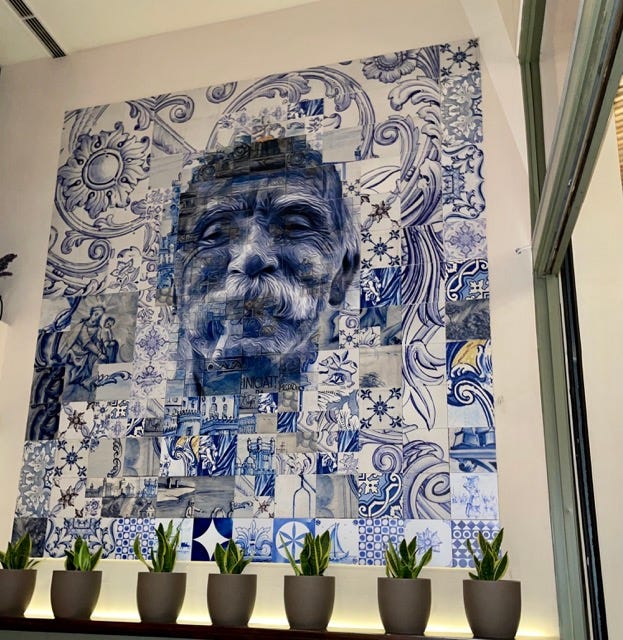
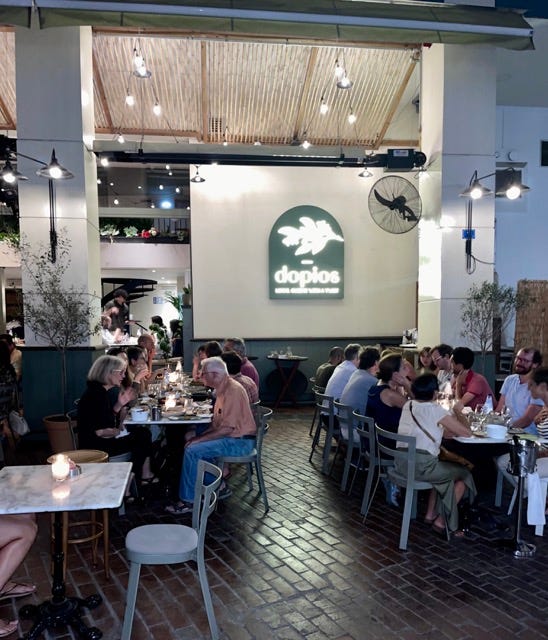
Stepping into the extensive establishment, we were enveloped in an atmosphere that exuded warmth, charm, and a deep sense of history. The air was filled with tantalizing aromas, a mélange of herbs, spices and the sizzling of fresh ingredients that dance in the kitchen. As we settled in our seats, we couldn’t help but feel a sense of anticipation building within us.
The unfamiliar names and descriptions of dishes left us curious and intrigued. We eagerly awaited the guidance of the warm and knowledgeable staff or the recommendation of the friendly fellow diners.
The varieties of Greek olive oil were rich and golden infusing every dish with its distinct aroma. The vegetables had been harvested from nearby fields, radiating vibrant colors that literally transported me to the sun-drenched hillsides of Greece.
Let’s Talk Fish
The essence of Greece is the sea and Athenians love their fish. At Dopios we found an extensive selection.
Kalamari otherwise known as European squid (cousin to octopus), commonly sliced up in rings and fried up in batter.
Karavidi or crayfish typically stewed with tomatoes, garlic, and herbs.
Koutsomoura, which is a red mullet, usually baked if small or grilled if large.
Palamida, an oily fish similar to mackerel and tuna known for pickling and preserving in oil for a mezze platter.
Peskandritsa, monkfish, renowned for an aesthetically unappealing fish, however tasty with only a few bones to pick. Due to the weight and integrity of this species, there are many possibilities for delicious recipes.
Salahi, skate or ray, a delicacy that is mostly fried and served with a salad.
Sardines, herring, eel, and mackerel are the predominant local fish from Greek waters and grace the tables in multiple ways. The ubiquitous octopus is quite popular, and the waters are bountiful. Greek taverns tend to grill or braise these after their application of tenderizing, and there are indeed many!
Cheese offerings
Kaseri Xanthis, a sheep milk cheese, aged for 18 months from the island of Crete. Crotin, goat cheese infused with Roquefort fungus from Evia Island.
Marriareno, sheep and goat milk from Kasos Island as well as Graviera Kozianis with Truffle from Kozani.
Food That Spoke to Us
Braised Octopus with Santorini Fava Puree & Black Truffle Oil. Just wow!
Tastes: Earthy, nuttiness and mushroom nuances of the black truffle oil, fragrant, complex, and sophisticated. All of these enhanced the sleek, velvety texture of Santorini Fava, a specialty, Protected Designation of Origin due to the origin of growth on an island with rich volcanic soil! Topped with the mildly sweet and succulent octopus with an oceanic undertone, a tender texture, yet retaining some chewiness to complete the mouth feel.
Shrimp Popcorn “Skordalia”- Black Garlic and Umeboshi Aioli. What fun!

Tastes: Fruity aroma with plum nuances. The depth and sweetness of the black garlic added an intense, almost syrupy flavor profile. Overall, a unique amalgamation of warm fried and crispy shrimp.
Sea Bass with Bread Crust and Kalamata Olive Cream.
Tastes: The defining characteristics of a superbly cooked sea bass came through with the nostalgia of smokiness, mildly sweet, buttery, succulent and flaky. This versatile fish made a great canvas for the variety of accompaniments such as the crusty warm bread to scoop up the fruity and citrusy kalamata cream.
Local Wine Always Says Alot
Estate Argyros, Santorini Assyrtiko 2021
Notes: light lemony color, renowned for bright flavors, aromatic, mostly peachy with honey undertones, crisp yet elegant finish.
The warmth of Greek hospitality enfolded us throughout the meal and the staff made us feel like honored guests. We knew we had stumbled upon a hidden gem that holds the secrets of Greece’s culinary soul.
Leaving the restaurant, we carried with us a sense of fulfilment and contentment. The experience of exploring a local restaurant in Greece touched our taste buds, heart, and soul. It reminded us of how the power of food brings people together.
The gateway to the rich tapestry of food culture, novelty, ethnicity, and history are available for us to discover and celebrate. Gastronomic local restaurants serve as vibrant hubs where the distinctive cuisine of a city comes to life. They provide a window into the culinary heritage of the place.
Novelty, diversity, and ethnicity, all hallmarks of melting-pot cities, are beautifully interwoven in their food scene. Gain insight into the traditions and customs that have shaped the local community. Be bold. Explore this universal language of food. Taste the unfamiliar, discover new ingredients, and savor the fusion of novel flavor combinations.
There is rich history woven into their very foundations. Gaining a deeper understanding of a city’s identity and its relationship with food.
“Kali Oreksi”
Bon Appetit!



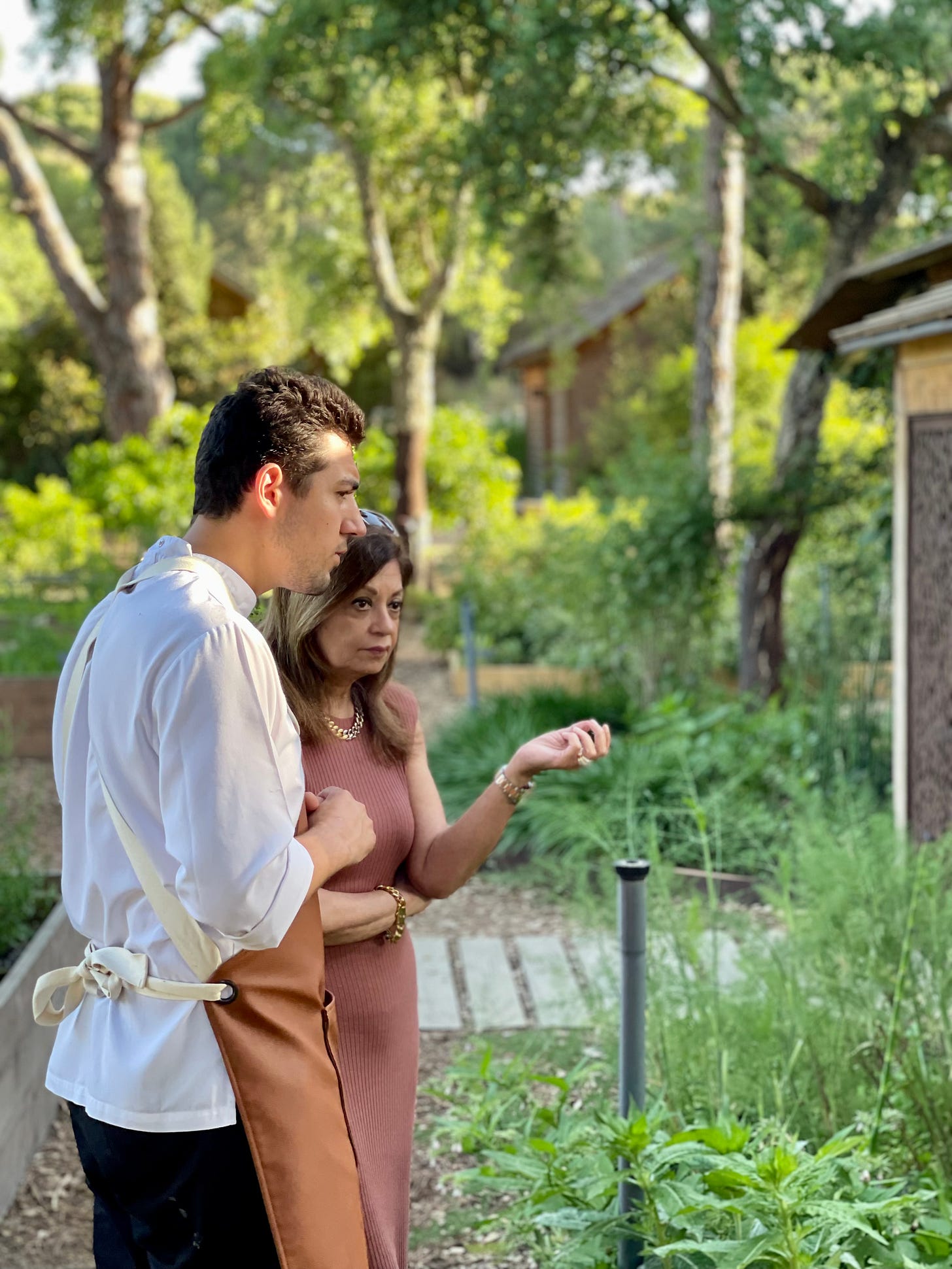
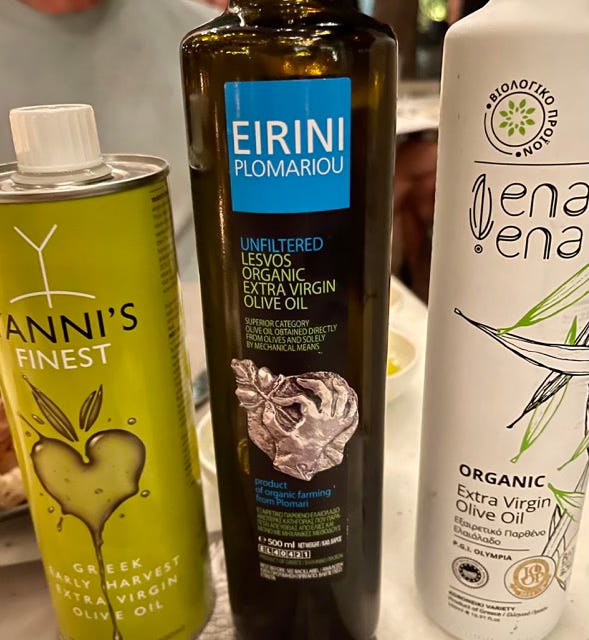


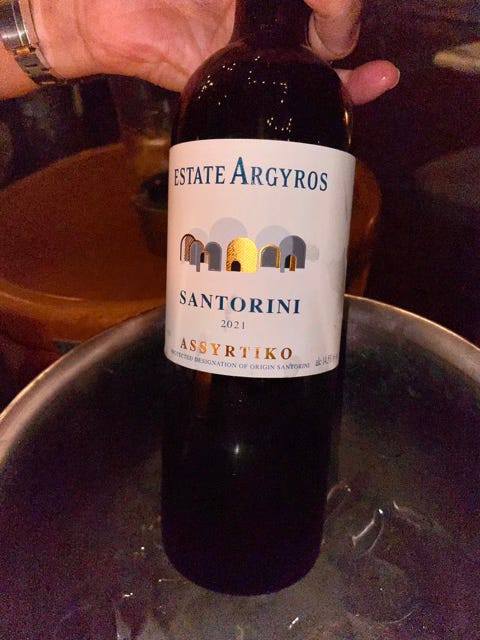
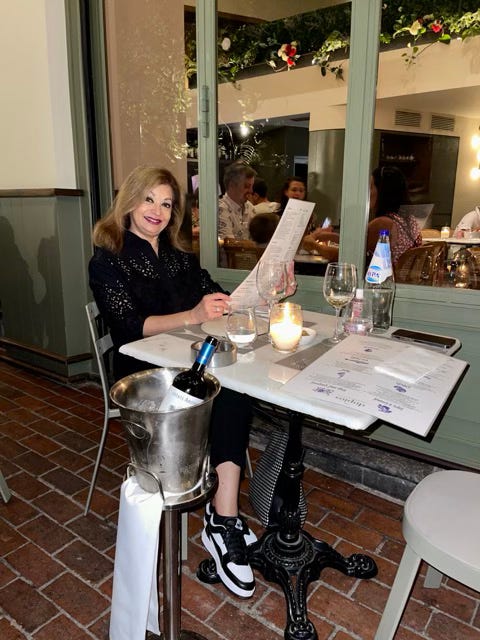
Phenomenal article!!!! Thx for sharing !
Very Educational! Thks for sharing